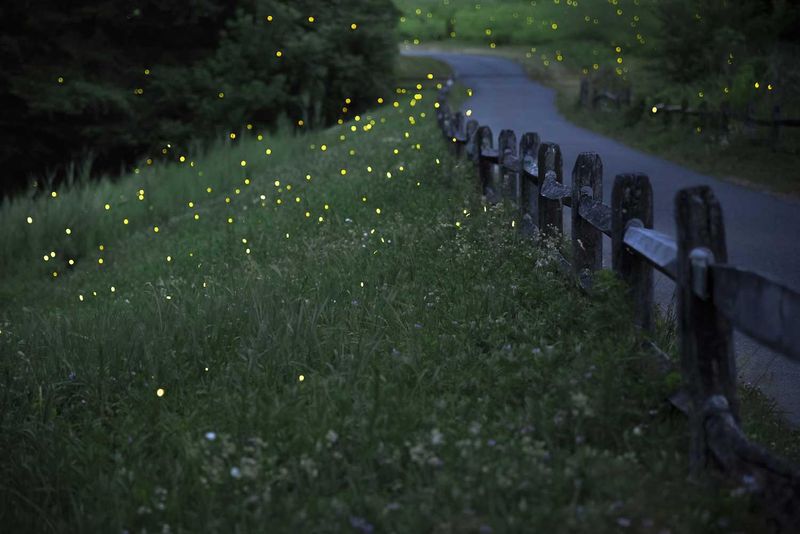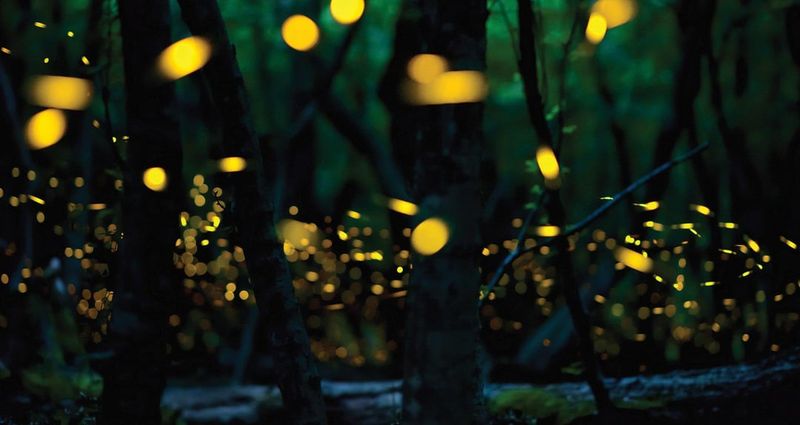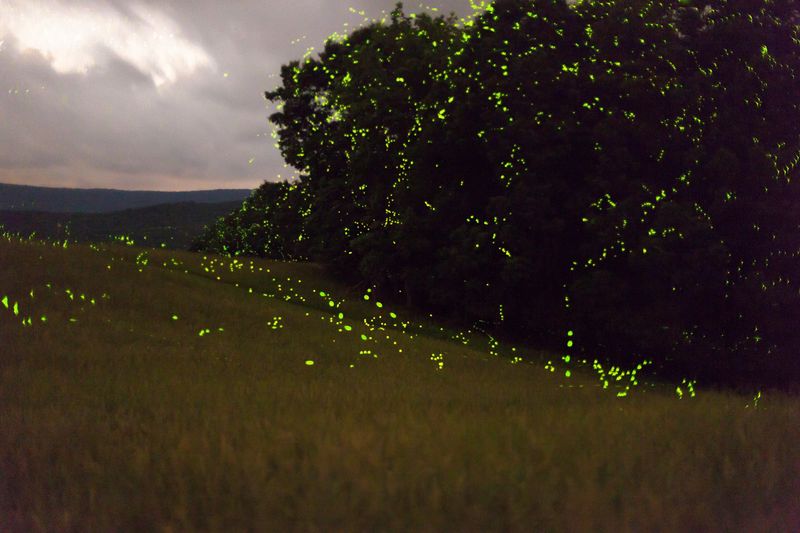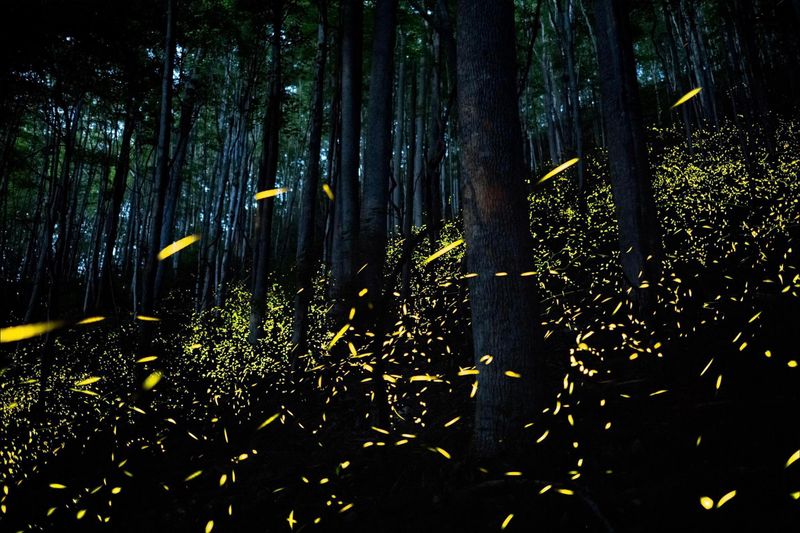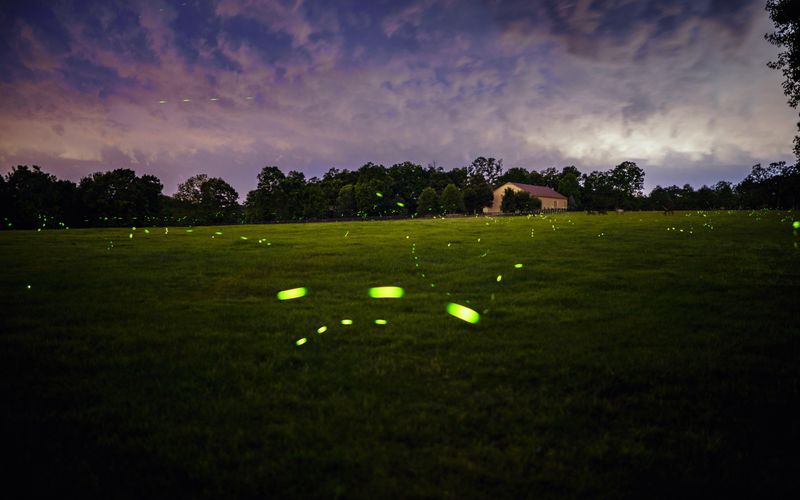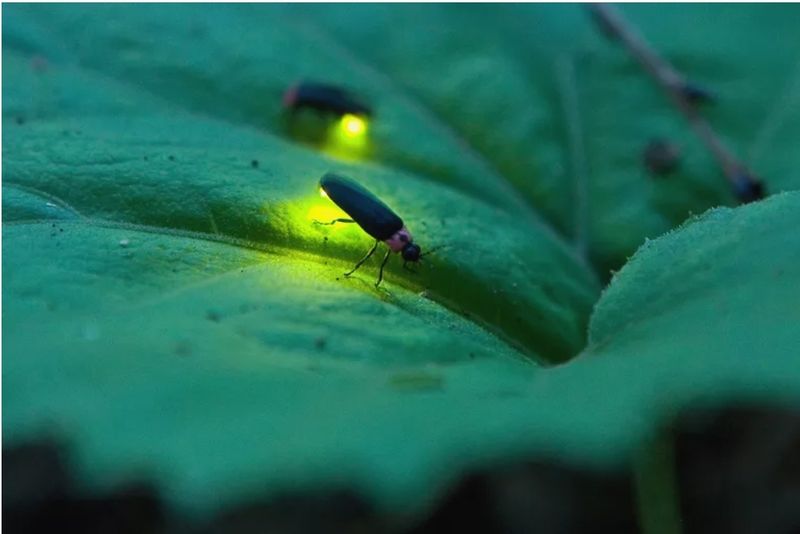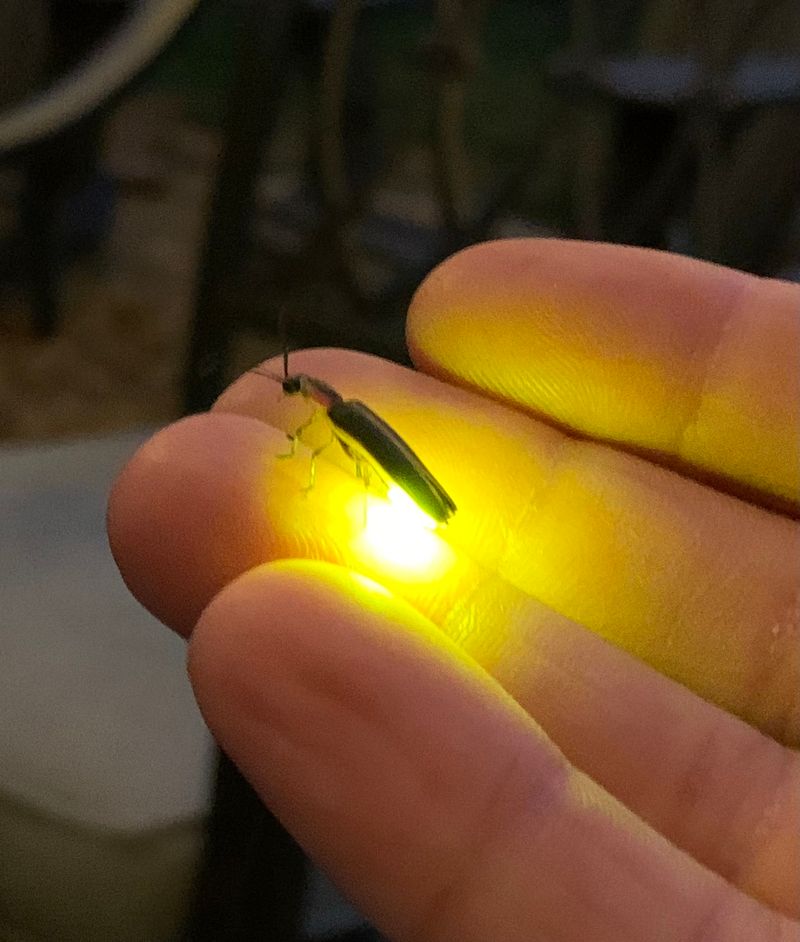Connecticut evenings don’t feel the same when those little glowing fireflies start fading away. I’ve talked to a few neighbors who noticed their yards getting quieter each summer.
It’s surprising how many small things can chip away at their numbers. Let’s break down what’s making these Connecticut nights lose their sparkle.
1. Light Pollution Ruins Their Romance
Bright streetlights and porch lamps mess up firefly communication in Connecticut neighborhoods. Male fireflies flash specific patterns to attract females, but artificial lights confuse these signals completely.
When outdoor lighting drowns out their natural glow, fireflies struggle to find mates. Many Connecticut towns have switched to LED lights that shine brighter than ever before.
Turning off unnecessary lights during summer evenings helps these insects see each other better and continue their important mating rituals throughout the state.
2. Lawn Chemicals Kill Their Babies
Pesticides and fertilizers spread across Connecticut lawns poison firefly larvae living in the soil. Baby fireflies spend up to two years underground before becoming adults.
Chemical treatments meant for mosquitoes or weeds accidentally harm these developing insects. Connecticut homeowners often don’t realize their lawn care products destroy firefly populations.
Switching to organic lawn treatments protects firefly larvae so they can grow into the glowing adults we love. Natural yard care methods keep Connecticut soil healthy for these special creatures.
3. Perfect Habitat Is Disappearing Fast
Fireflies need tall grass, leaf litter, and moist areas to survive and reproduce successfully. Connecticut development projects replace natural spaces with buildings and manicured lawns.
When people clear away messy vegetation, they destroy firefly homes without realizing it. These insects lay eggs in damp soil covered by leaves and plant debris.
Leaving some wild corners in your Connecticut yard gives fireflies the habitat they desperately need. Creating unmowed sections with native plants helps these glowing bugs thrive again.
4. Climate Change Disrupts Their Schedule
Warmer temperatures in Connecticut are throwing off firefly life cycles that evolved over thousands of years. Unusual weather patterns confuse when fireflies should emerge from the ground.
Some Connecticut fireflies now appear earlier or later than normal, missing their mating windows. Droughts dry out the moist soil baby fireflies need to survive underground.
Extreme weather events become more common across Connecticut, making survival harder for these delicate insects each passing year.
5. Development Fragments Their Populations
Roads, shopping centers, and housing subdivisions split Connecticut firefly groups into isolated patches. Small, separated populations struggle to find enough mates to reproduce successfully.
When firefly communities can’t connect with each other, genetic diversity drops dangerously low. Connecticut’s growing suburbs create barriers these slow-moving insects simply cannot cross.
Building wildlife corridors between natural areas helps firefly populations stay connected throughout the state. Protecting green spaces gives these insects room to spread and maintain healthy numbers.
6. Fewer People Plant Native Species
Connecticut yards filled with non-native plants don’t support the insects fireflies eat as larvae. Baby fireflies feed on snails, slugs, and worms that prefer native vegetation.
Exotic ornamental plants look pretty but create food deserts for firefly populations. When Connecticut homeowners choose foreign species, they accidentally starve local firefly communities.
Planting native Connecticut flowers, shrubs, and grasses brings back the prey firefly larvae need. Native gardens create complete ecosystems where these magical insects can flourish once more.
7. Excessive Mowing Destroys Their Nurseries
Frequent lawn mowing in Connecticut eliminates the ground cover firefly larvae require for protection. Cutting grass too short exposes baby fireflies to predators and harsh sunlight.
Many Connecticut homeowners mow weekly, never letting vegetation grow tall enough for fireflies. Grass clippings get bagged and removed instead of creating protective mulch layers.
Raising mower blades higher and mowing less often gives fireflies shelter they need. Letting Connecticut lawns grow a bit wild creates safe spaces for these declining insects.


